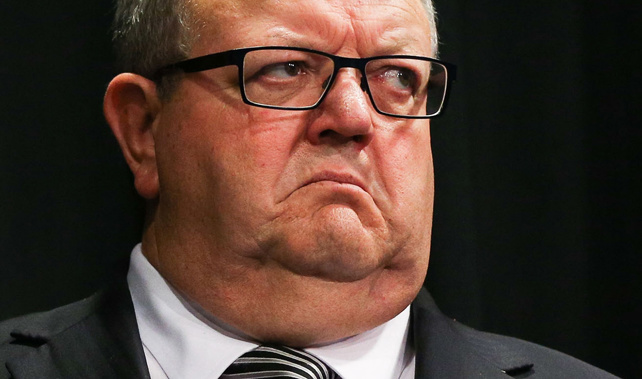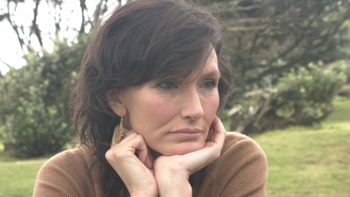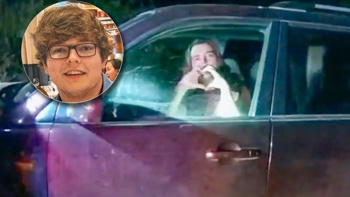
Acting Civil Defence Minister Gerry Brownlee has blasted comments made by the head of Geonet - saying he feels blindsided.
Brownlee said he took issue with Dr Ken Gledhill, who works for GNS Science and heads its Geonet department, talking publicly about how better technology would help the service, when no approach had been made to the Government.
Brownlee said he would contact the leadership of GNS Science, including acting chief executive Neal Wai Poi, tomorrow and express that view.
That centred on the fact that Gledhill or his team had not made an approach or report to the Government about their view that a better monitoring system was desirable. Gledhill spoke to media from the Beehive's civil defence bunker today.
He said his team had a good idea of what system improvements could be made, but hadn't yet asked the Government to support those changes yet.
Prime Minister John Key this week said a national disaster warning system that would likely send a text to every cellphone in the country is not far away, and Gledhill said there were also technological improvements that would aid analysis that informed those alerts.
"Definitely. Can I use an analogy of a pilot sitting in the cockpit of an aircraft, and he's got all these gauges and dials and things around him. If we had a set-up like that - where all the data was being displayed, and easily can be assimilated, and we had a staffed centre, we would be different. "At the moment it's a bit like each one of those gauges has to be brought up separately by the person using the system. So, yes, we can definitely improve it.
"I think at the moment we need to work out what is possible ... we have a pretty good idea how we could do everything better. But we haven't actually specifically asked [Government for funding]. There are projects underway which will address this."
Following the earthquake that struck the top of the South Island and tsunami threat, Gledhill used a blog post to reiterate the need for a 24/7 monitoring centre.
He said the existing situation was "not ideal" because "we have to wake people and get them out of bed to look at complex data and make serious calls very quickly". A full-time monitoring system would require eight more staff and some technological upgrades, and would take three years to set up, he said.
Acting Civil Defence Minister Gerry Brownlee has said a change to the monitoring system is possible, saying he wanted to discuss the matter with GNS Science.
"The question will be for GNS...how they think they should structure for the future. We will obviously talk to them about that. But I think simply...saying it has got to be 24/7, the question is, what would be the difference the other day?" Brownlee said on TVNZ's Q&A programme.
"Because if you look at [what international centres are saying] they are all saying, actually, this was a really interesting event, multiple faults rupturing at one time, very, very difficult to get a handle exactly on what was happening."
Labour leader Andrew Little has backed the call for an upgraded monitoring system. Shortly after the magnitude 7.8 earthquake early on Monday morning, GeoNet's first computer estimate was magnitude 6.5. After the duty officer arrived and reviewed data the magnitude was revised to 6.6.
Just over half an hour after the earthquake Civil Defence tweeted that there was no tsunami threat, but 20 minutes later tweeted that a tsunami was possible. Gledhill said today that there were always lessons to learn after such events, but "it was actually responded to incredibly quickly by our duty person and the processes were followed really well".
"The tsunami turned out to be a surprise, and it wasn't a surprise just for us - my international colleagues, who I obviously talk to, they had the same issue. "Large, on-land earthquakes do not usually cause tsunamis. We did not know that it had gone offshore, that was a big factor ... I don't think with the current setup we could really have done much better."
Gledhill stressed again that even the best monitoring centre might not have been quick enough for many coastal communities, and the best advice was that if you live near the ocean and feel a strong earthquake, head for higher ground immediately.
Other updates from today's briefing include:
• Brigadier John Boswell from the NZ Defence Force said they had identified 36 points along the inland road to Kaikoura that were of concern, with three proving "very difficult" to negotiate.
The road remains closed to the public. On Friday a 27-truck NZDF convoy got through. Another smaller convoy was on the road currently. "As an indication of just how slow and difficult it is, it is taking them three hours to travel the first 60km. So they are moving at about 20km an hour. There are some real issues with that road." Boswell said the NZDF hopes to use the inland road as the main way to get supplies and support to Kaikoura, but the HMNZS Canterbury was being kept at Lyttelton on standby, having delivered 190 evacuees to the port overnight.
We welcome our international friends to Wellington this morning! pic.twitter.com/xBbOTXx22w
— NZ Defence Force (@NZDefenceForce) November 19, 2016
The USS Sampson and other warships from Canada, Australia and New Zealand have travelled up the coast and will be in Wellington harbour for most of today, before going on to Auckland to join the New Zealand Navy's 75th birthday celebrations.
"It's an opportunity for the US Secretary of Navy and Ambassador [Mark Gilbert], the Acting Prime Minister and senior defence officials to thank those ships for the considerable support they have provided. "That was absolutely critical. We would have struggled to unload Canterbury as quickly as we did without the efforts of those four ships."
• Dr Stewart Jessamine from the Ministry of Health said boil water notices were still in place in earthquake-affected areas, and there was always a risk of gastroenteritis disease. There had been about six reports in the past week of gastroenteritis disease, but these were contained and there was no outbreak, Jessamine said.
"The last one started about two or three days ago. All the patients are well, we've got no evidence of it being transmitted within the community." The Ministry of Health was aware of people taking raw milk from farms that would otherwise have to throw the milk away. "Our only advice in that space is ... there is always a risk that that might be infected as well with bacteria from the cows. So if you are going to drink it, boil it up to 70 degrees for a minute.
"The experience with the Canterbury earthquakes made it clear that after the initial response, attention would need to turn to mental health issues.
Take your Radio, Podcasts and Music with you









